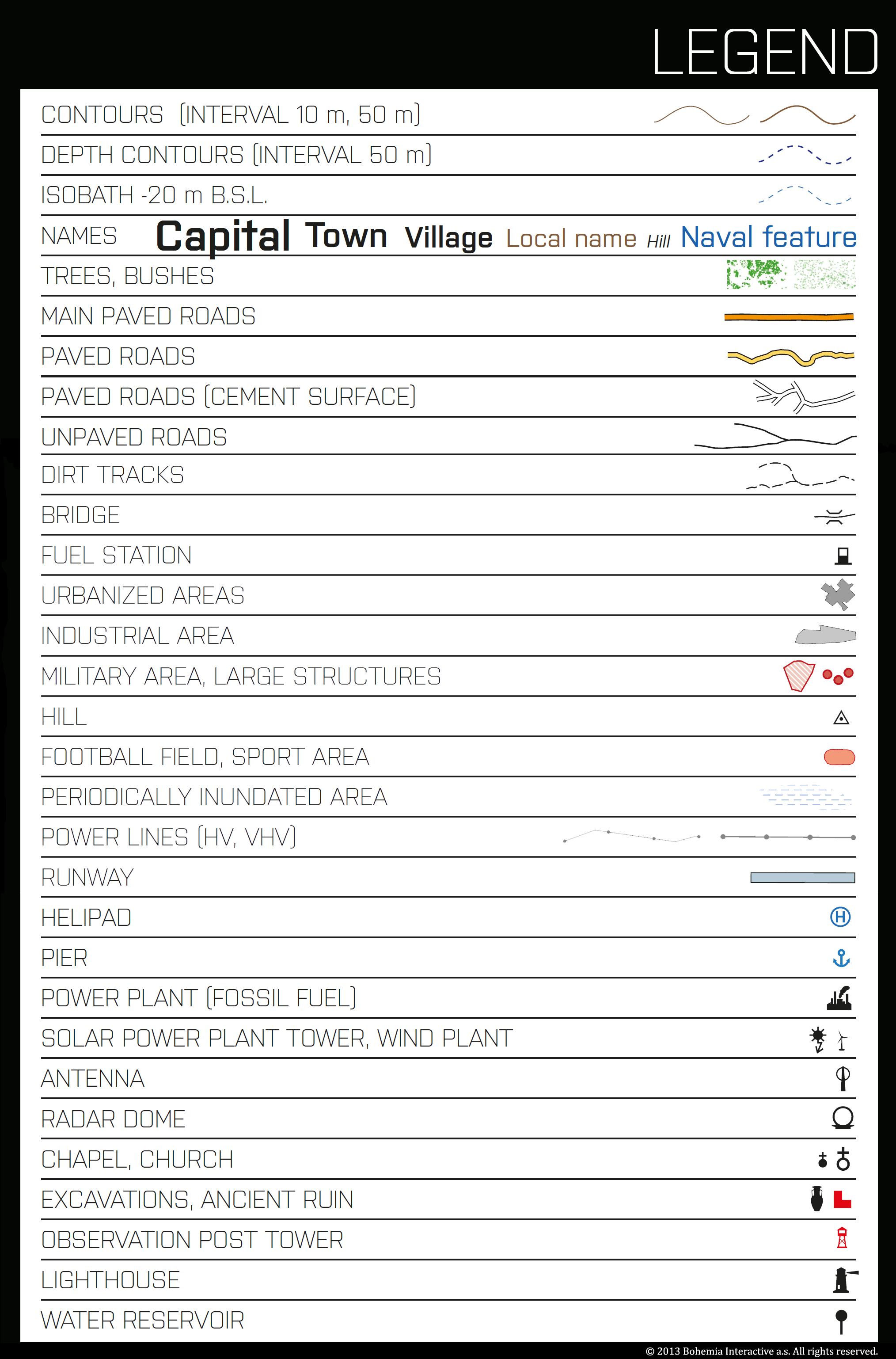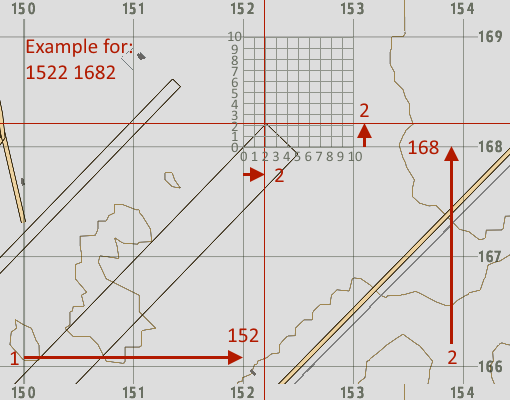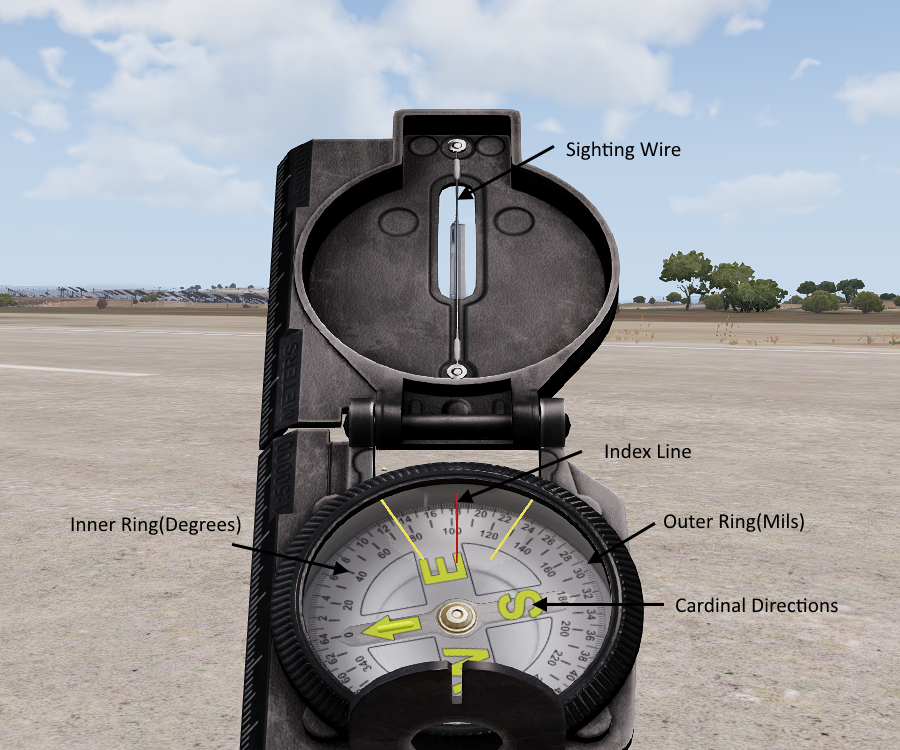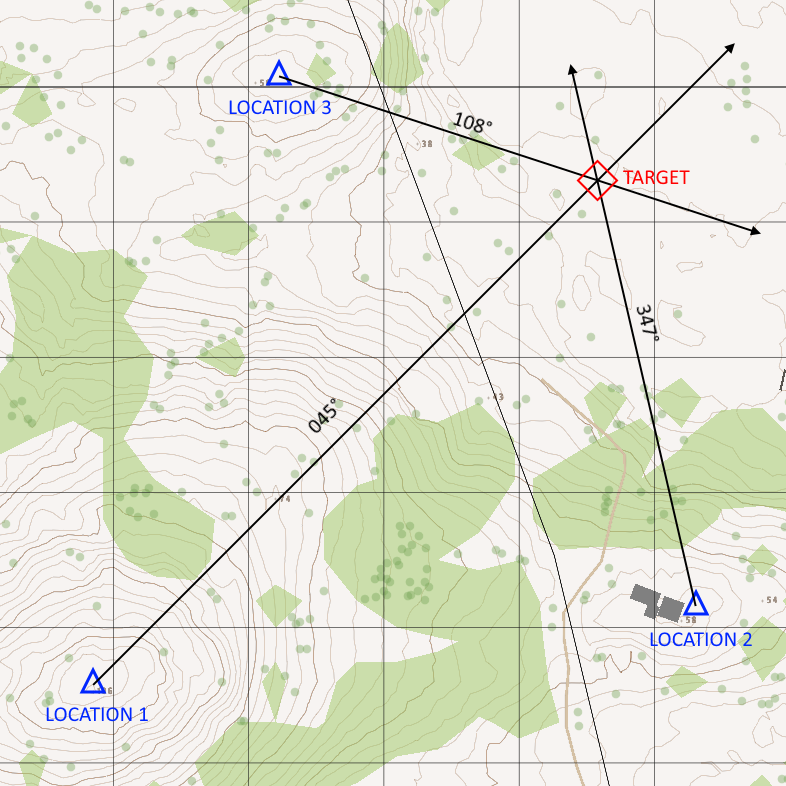This is an old revision of the document!
LAND NAVIGATION(WIP)
By: Thendash
PREFACE
'Land Navigation' aims to instruct members on performing basic land navigation duties. The author of this document does not recommend that a reader attempt to use the techniques described henceforth in real life situations and as such you do so at your own risk.
SCOPE
This guide contains information on map reading and land navigation techniques, primarily as they pertain to ArmA.
MAP READING
INTRODUCTION
Maps provide information on the existence, location of, and the distance between ground features. It also indicates variations in terrain, heights of natural features, and the extent of vegetation cover. They will be your primary tool in use during land navigation and therefore you must be familiar with all aspects of a map and how to read them.
TYPE
The map used in ARMA 3 is a variable scale, topographic map using a simplified MGRS(Military Grid Reference System). Compared to real life maps, the ARMA map differs in a few ways, primarily:
- No difference between magnetic North and true North.
- No magnetic declination to account for.
- No grid zone designator to account for.
SYMBOLS AND MARGINAL INFORMATION
Margin
The only marginal information on the ARMA 3 map, is scale and contour line distance.
Symbols
Because it is often not practical to show certain objects at scale on a map, or because more information than just the shape and size of an object is required, symbols are commonly displayed on the map.
Common symbols seen on the ARMA map are categorized into two categories, man made objects and natural objects.
Symbols representing man made objects include:
- Primary Paved Roads(MSR)
- Paved Roads(ASR)
- Dirt Roads
- Foot Paths
- Town and City Centers
- Buildings and Walls
- Prominent Vertical Structures(Antenna, Wind Generator, Lighthouse, etc)
- Runways and Airports
Symbols representing natural objects include:
- Contour and Elevation
- Mountain Peaks
- Water Features
- Forested Areas
- Brush
GRIDS
Reading a grid reference is essential to locating and communicating positions in the world onto a map.
Precision
The map is divided into equally sized grid squares, and the intersecting lines are numbered both vertically(Eastings) and horizontally(Northings). Each digit of a grid reference represents one decimal place, starting at 10 km with the two digit grid reference.
- 10 km square: 2 digit reference
- 1 km square: 4 digit reference
- 100 m square: 6 digit reference
- 10 m square: 8 digit reference
- 1 m square: 10 digit reference
It is easy to read 2, 4, and 6 digit grid references from the ARMA map because the map scales as you zoom in and out, but you can read a more precise grid reference using either map tools or estimation. Either way, the steps remain the same:
- Read LEFT TO RIGHT first
- Read BOTTOM TO TOP second
- Combine the two readings together to create the grid reference.
These steps can be remembered by the mnemonic, ‘RIGHT in the house, UP the stairs’
ELEVATION
Contour Lines
Elevation on the map is represented by contour lines. ARMA uses two types of contour lines:
- Index Lines: Starting at sea level, every fifth contour line is considered an Index Line and is shown in red on the map.
- Intermediate Lines: All contour lines between the index lines are considered intermediate lines and are spaced at the current contour interval.
Contour Interval
You can find the ‘contour interval’ in the bottom right margin on the ARMA map. The contour interval represents the vertical distance between any two adjacent contour lines at the current map scale. Thus, the closer the contour lines are grouped, the steeper the slope is because more vertical distance is covered in a shorter horizontal distance.
Contour lines never intersect because any point on a contour line is at the same elevation above or below sea level.
EQUIPMENT
COMPASS
The compass is a tool used to measure direction. The version modeled in ARMA is a lensatic compass with both degree and milliradian markings.
Measuring Direction
Typically we measure direction either generally using the cardinal directions, or more precise using degrees. Mils are not often used in ARMA.
- Cardinal Direction: The four cardinal directions are displayed on the center of the compass ring and allow for quick reference of general direction.
- Bearing Degrees: The inner ring of the compass shows degrees printed every ten degrees and a hash mark every five degrees. There are 360 degrees.
- Bearing Mils: The outer ring of the compass shows mils printed every 200 mils, large hash mark every 100 mils, and a small hash mark every 20 mils. There are 6400 mils.
MAP TOOLS
The ACE3 MapTool is currently broken.
DAGR
NAVIGATION TECHNIQUES
BEARING
Technically azimuth is the proper term, but the term bearing is commonly used to refer to the direction to an object or location in relation to magnetic North.
In ARMA we do not need to worry about the difference between magnetic bearings measured with a compass, and grid bearings measured on the map.
Taking a Bearing
To measure a bearing from your current location to a visible object:
- Line up the sighting wire on your compass with the object
- Read the bearing in degrees where the index line intersects with the inner ring.
Back Bearing
A back bearing is the opposite direction of a bearing. It is commonly required for use during land navigation.
To convert a bearing into a back bearing:
- Add 180 degrees if the bearing is 180 degrees or less
- Subtract 180 degrees if the bearing is 180 degrees or greater
LOCATION
Intersection is the location of an unknown point by successively occupying at least two known positions on the ground and then map sighting on the unknown location. It is not often used in ARMA, but can be used to locate the position of an otherwise inaccessible location. Steps:
- Measure the direction to the target from known location 1.
- Draw the bearing from known location 1.
- Move, or communicate with someone at a different known location.
- Measure the direction to the target from known location 2.
- Draw the bearing from the known location 2.
- (Optional)Repeat from subsequent known locations as desired.
- The intersection of the drawn bearings is the location of the target.



